


NB This post is more than a decade old.
 Towards the end of October 2008, I received a flurry of emails asking me to check out new social networking sites for scientists, I’ve already reviewed the nanoscience community, of course. I suspect that, the academic year having moved into full swing, there were a few scientists hoping to tap into the power of social media tools and the whole web-two-point-ohhhh thing.
Towards the end of October 2008, I received a flurry of emails asking me to check out new social networking sites for scientists, I’ve already reviewed the nanoscience community, of course. I suspect that, the academic year having moved into full swing, there were a few scientists hoping to tap into the power of social media tools and the whole web-two-point-ohhhh thing.
This from Brian Krueger:
“I came across your blog during my weekly google search for “science social network.” I thought you might be interested in my website, LabSpaces.net. It’s a social network for the sciences that I’ve had on-line for the last two years and I recently got my University to send out a press release about it. I think you should stop by and check it out. Let me know what you think, I’m always looking for suggestions on how to improve the site.”
LabSpaces has all of the features of a social-networking site with the addition of a daily science newsfeed, lab profiles, a science forum, blogs, and a science protocol database. Apparently, the site provides space for researchers to create their own user profile, add their publication history, upload technical research protocols, blog about science, and share research articles with the community. The site will soon host a free video conferencing service to facilitate long distance collaborations and journal clubs.
New Zealander Peter Matthews who works in Japan emailed:
“I am a full-time researcher from NZ, working in Japan, at a museum with many international research visitors. This multilingual environment made me very aware of: (1) the difficulties that non-English based researchers face when using English, and (2) the difficulties that English mono-linguals face when trying to access or publish research in other important research languages, such as Spanish, Chinese, Japanese, French, and so on. Hence my website: The Research Cooperative – http://cooperative.ning.com. Please have a look, join if you want, and please tell any friends and colleagues about this site if you think they might find it useful.”
Pascal Boels, Managing Director of SurgyTec.com emailed with a medical tale:
“Our website is for and by medical professionals. It’s a video-sharing site for surgeons and medical professionals to show off their newly minted skills. It makes it easy for medical professionals to upload videos or slideshows and share those with the community. You can search for videos by specialty, organ/region, tissue, etiology, operation type, or technique. Many surgeons perform original and high-quality techniques in their operating room and equally many surgeons would like to learn from these new and inspiring techniques. Up till now it was very difficult, time consuming and expensive to take a look in each others operating room and share practical knowledge, tips and tricks. Surgytec.com provides the solution for this problem. We are currently serving over 4000 surgeons from more than 124 countries, sharing over 400 procedures
Priyan Weerappuli had long been interested in scientific research but felt that applied research was guarded by private institutions while basic research was held within the confines of colleges and universities by overpriced journals and an oversimplification that occurred whenever research results were translated for more general audiences. His forum/platform will attempt to open this research to a general audience – http://www.theopensourcescienceproject.com
Some correspondents are claiming they’re approaching web 3.0 nirvana:
“ResearchGATE is proud to announce a major update: We greatly improved our search functionality and called it ReFind. The name symbolizes the importance of an efficient and result-driven search functionality within research in general and within our network in particular. ReFind is one of the first search engines based on semantic, “intelligent” correlations. It enables you to find groups, papers, fellow researchers and everything else within and outside of ResearchGATE without having to read through dozens of irrelevant results. Just type a few sentences into ReFind or simply copy and paste your abstract. Our semantic algorithm will then search the leading databases for similar work, providing you with truly relevant results.” [Sounds like my Zemanta/ResearchBlogging.org idea, DB]
One observer pointed out, however, that ResearchGate’s semantic search is maybe not the greatest thing to happen to search in a decade (especially, when we have the likes of True Knowledge Ubiquity, and Zemanta. Indeed, some users have said it is not much of an improvement on conventional search.
Then there was:
“ScienceStage.com – Science in the 21st century – A wide forum for science – on an interdisciplinary, international and individual level. ScienceStage.com, the only universal online portal for science, advanced teaching and academic research, bridges a major gap in scientific research and learning. ScienceStage.com is a virtual conference room, lecture hall, laboratory, library and meeting venue all in one.”
But, perhaps the best is saved for last. An Oxford graduate student, who has completed his PhD, Richard Price, has launched Academia.edu, which he says does two things:
“It displays academics around the world in a ‘tree’ format, according to which institution/department they are affiliated with. And, it enables researchers to keep track of the latest developments in their
field – the latest people, papers, and talks.”
Price wants to see every academic in the world on his tree and already has Richard Dawkins, Stephen Hawking, Paul Krugman, and Noam Chomsky as members. But, that’s the hype what about its potential? It resembles BioMedExperts because both use a “social” publishing tree, but is that enough to engage scientists?
It will be interesting to see whether any of these sites gain the traction their creators hope for and how things will pan out as the credit crunch bites harder. “There are a bunch of them out there,” Krueger told me, “It’s kind of scary how many came out after Nature and I went on-line in 2006. There’s definitely a lot of competition out there, it seems like a new one appears every month. I wonder how the economy and loss of tech funding is going to affect the larger start-ups.”
Then, there are those perhaps more well-known social media sites and networks for scientists, some of which are mentioned in Sciencebase and its sibling sites (tomorrow), in no particular order:
- Nature Network – uber network from the publishing giant (discontinued December 2013)
- BioMedExperts – Scientific social networking
- BioWizard – Blogged up Pubmed search
- Mendeley – Digital paper repository and sharing
- Labmeeting (blog) – Ditto
- YourLabData – socialised LIMS
- SciLink – Sci-Linkedin
- Myexperiment.com – mostly workflows.
- Laboratree.org similar to Researchgate. Not particularly social beyond groups and sharing documents with collaborators, but email is better, and arguably more secure.
- scitizen.com – collaborative science news publishing
- SocialMD – Med-Linkedin
- Ozmosis – Ditto
- DNA Network – network of DNA/genetics bloggers
- ResearchCrossroads – Socialised grant databases
- MyNetResearch – Socialised LIMS at a price
- SciVee – YouTube for scientists (see also Watch with Sciencebase page
- Scientist Solutions – science chat
- Twitter science group and Scientwists list
There are so many, I can barely keep up, but if you have any you think I should add to the list, let me know via the comments box below. Or, more importantly, if you have used any of these systems please leave your thoughts.
Meanwhile, my apologies if you were expecting a lesson in how to use the likes of Twotter, FiendFreed, Ding, Pyuke, or Facebok’s feeble science apps, to help you get on in science socially, but I thought it was about time I did some linking out to the web 3.0 brigade in the world of science, so here they are.
 The difference between staying in with friends and going out? Obvious, really. But, translate that idea to networks and you have the basis of self-organized virtual communities, according to Panayotis Antoniadis of the Université Pierre et Marie Curie, in Paris France.
The difference between staying in with friends and going out? Obvious, really. But, translate that idea to networks and you have the basis of self-organized virtual communities, according to Panayotis Antoniadis of the Université Pierre et Marie Curie, in Paris France.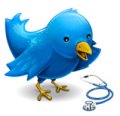 My good friend Jo Brodie who works at DiabetesUK and twitters as
My good friend Jo Brodie who works at DiabetesUK and twitters as 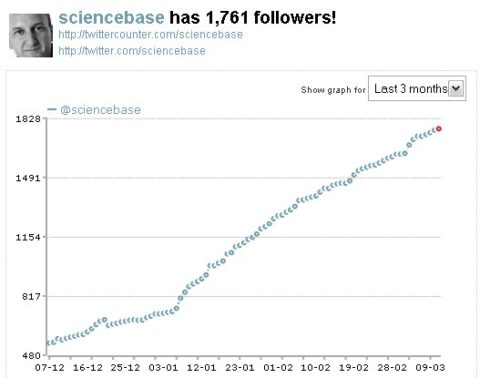
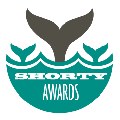 UPDATE: Sciencebase was placed third in the Shorty Awards science category, apparently that gets me a free ticket to the awards ceremony, but unfortunately won’t pay my airfare or accommodation…regardless thanks for all your nominations and votes!!!
UPDATE: Sciencebase was placed third in the Shorty Awards science category, apparently that gets me a free ticket to the awards ceremony, but unfortunately won’t pay my airfare or accommodation…regardless thanks for all your nominations and votes!!!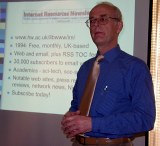 I’m still following the
I’m still following the 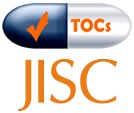 MacLeod will soon be busy promoting
MacLeod will soon be busy promoting 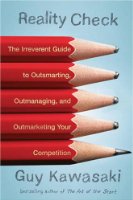 Welcome fellow twitterers, don’t forget to follow me on
Welcome fellow twitterers, don’t forget to follow me on  All of what Kawasaki discusses is about people whether he’s explaining the top ten lies of venture capitalists or how old geezers can capture or enrapture the youth market, whether he’s telling you about how late he came to blogging or how creating a community is not just the latest fad, something
All of what Kawasaki discusses is about people whether he’s explaining the top ten lies of venture capitalists or how old geezers can capture or enrapture the youth market, whether he’s telling you about how late he came to blogging or how creating a community is not just the latest fad, something  My post on
My post on  Towards the end of October 2008, I received a flurry of emails asking me to check out new social networking sites for scientists, I’ve already reviewed the
Towards the end of October 2008, I received a flurry of emails asking me to check out new social networking sites for scientists, I’ve already reviewed the